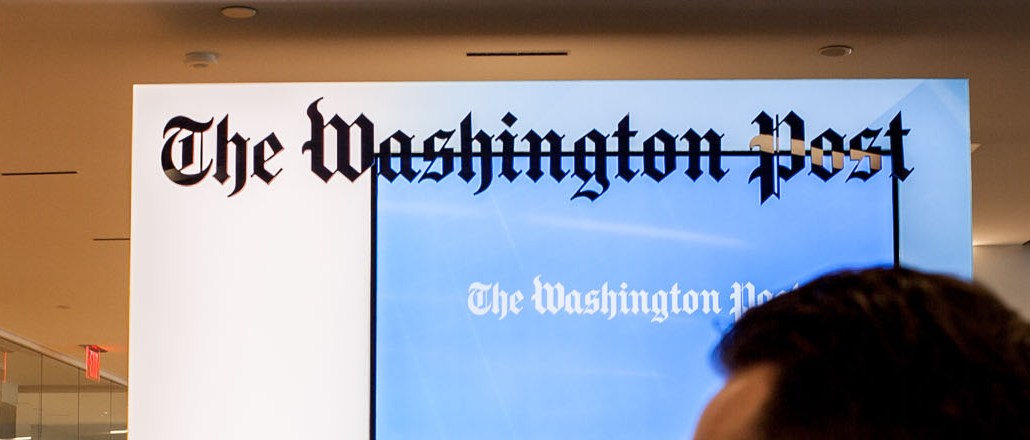Insights from CTV leaders at Dentsu, Horizon Media and more
‘A different way of storytelling’: How The Washington Post shifts to video

Video is where the money is for publishers — or at least, they hope so.

Issues like scale and quality continue to dog efforts to attract advertisers and eyeballs, though, according to a Yahoo survey of 600 publishers in the U.S. and the U.K. The Washington Post is tackling these challenges head-on and sees video as an extension of its storytelling capabilities. It’s had success so far: According to data provided by Tubular Labs, Facebook drove 12.5 million views to the Post’s videos, double the Facebook views from June 2016. ComScore data shows that desktop video views for the month of July were 5.9 million, double what it was drawing in January.
The Washington Post has 40 people on the video team and has nearly tripled the amount of videos it publishes per day compared to last year, according to a Washington Post spokesperson. Micah Gelman is the director of editorial video for the Washington Post, and a speaker at the upcoming Digiday Video Anywhere Summit in Austin. Digiday spoke to Gelman, who assumed his role in April 2015, to discuss why video is difficult for traditional publishers — and why it’s got such potential.
What’s behind text publishers shifting resources to video?
Putting resources into video at the Post is not a new thing. Primarily, the way we’re thinking about it now is that video is a critical piece of our storytelling and it’s important for our advertisers as well who are looking for ways to reach their audience. Video is an effective way of doing that.
So it’s driven by user demand?
Of course, but it’s driven also to where advertisers are heading too. They’re looking for pre-roll inventory.
What are the particular challenges for a newspaper doing video?
It’s not necessarily native to the newsroom. There’s a certain amount of getting the newsroom comfortable with a different way of storytelling. I’ve had a lot of experience doing that, working at the AP for seven years. But there’s full-on support for the many ways in which we should be telling stories, and video is one of those.

What’s the biggest challenge that the Post faces in monetization?
We’ve been very successful at it, but there is an insatiable appetite for inventory. Having enough video scale to really move the needle is always something we’re striving for.
Is Facebook the center of the Post’s strategy?
I wouldn’t say it’s the center of the video strategy. It’s a good distribution platform. We are still much better able to monetize video on our site. We certainly can attract significant audience on our site and we’re able to match the video storytelling we do with the overall journalism that we do on our site. Facebook is an important distribution point but I wouldn’t call it central to our strategy.
How has Facebook Live been going?
Live is not a new thing for us. We see it as complementary and a new way of getting potentially new audiences to what we’re doing live. It gives us room for experimenting to find new story formats that we think would work well on other platforms. We look at live in three components: our events business, really produced speakers and roundtables on Washington Post Live; news events on Facebook Live that do not necessarily go onto the homepage; and the third piece is regional. We want to go beyond the usual TV format of the talking head and go places and show something visual.
Does anything intrigue you about Snapchat as a video platform?
Obviously, there’s a large potential audience there, so that’s something we’re eager to tap into. On all of these places, you’re getting new audiences for your storytelling, so those are all valuable things to be doing.
Apart from the U.S. election, what other events is your team looking forward to covering?
Heading into the fall, that will certainly be the biggest thing, but we’re a full-service newsroom. We’re going to be doing a lot of 360 video around travel this fall. We will be doing things like Fashion Week in 360. There’s a lot of stuff beyond politics we see as being very valuable.
Hear more from Micah Gelman at the Digiday Video Anywhere Summit in Austin this November.
More in Media

LinkedIn makes it easier for creators to track performance across platforms
LinkedIn’s new API marks a strategic move to position itself more firmly in the creator economy — and make the platform more attractive to advertisers. By allowing creators to integrate performance data into third-party tools, LinkedIn is reducing friction in campaign reporting and making it easier for brand partners to assess ROI.

Ad Tech Briefing: The ‘plumbers’ posing as the unlikely saviors of the internet
After several false dawns, can Cloudflare’s ‘anti-AI scraping tool’ finally offer publishers a road to commercial redemption?

Generative AI, not ad tech, is the new antitrust battleground for Google
Global regulatory scrutiny is shifting from Google’s ad tech and search dominance to generative AI, as they aim to address the most pressing threats to publisher business models.





